Cannabis Pests and Diseases

So you’ve done your due diligence and have prepared nothing but the best grow medium and nutrients for your garden (and in the correct amounts), installed a reliable lighting system with ventilation and odor control and have kept your grow space away from prying eyes. You even went out of your way to buy some top-quality seeds with reliable genetics, ensuring a healthy, bountiful harvest. What could possibly go wrong? Well, several things and very likely at no fault of your own. Life can be mysterious and brutal and sadly this also applies to growing cannabis. You can be the best, most experienced gardener the world has ever known, but various external factors can affect your crop to the point where you have to abort the mission and start over. We’ll refer to these external factors as pests and diseases, the bane of existence to many a grower, regardless of experience.
In contrast with issues such as nutrient excess or deficiencies, pests and diseases may occur despite the grower’s best intentions and practices. Outdoors, fungal spores, bacteria and pests can be found everywhere whereas indoors they can be found wherever growers let them enter, so prevention is of utmost importance as late-stage intervention techniques usually mean the issue has progressed to the point where your entire crop is seriously threatened. Both pests and diseases/infections can start out as innocent-looking blemishes that can quickly spread throughout your garden. If swift action isn’t taken, your chances of saving the crop diminish rather quickly. A grower can prepare the best grow space, however there are many varying factors to a garden that can result in imbalances in the environment such as humidity, temperature, light, airflow, etc. (or a combination thereof), that will make plants more vulnerable to disease or pest infestation. We’ll have a look at the most common pests and diseases below and what can be done to remedy the situation.
WHAT ARE THE MOST COMMON CANNABIS PESTS?
Pests can be more difficult to deal with compared to diseases as they are mobile and quickly reproduce. There are several methods of combatting them once they appear, though the best defense against them is to not allow them to come near your garden in the first place. With that in mind, we present the most common pests growers may face and how to eliminate them.
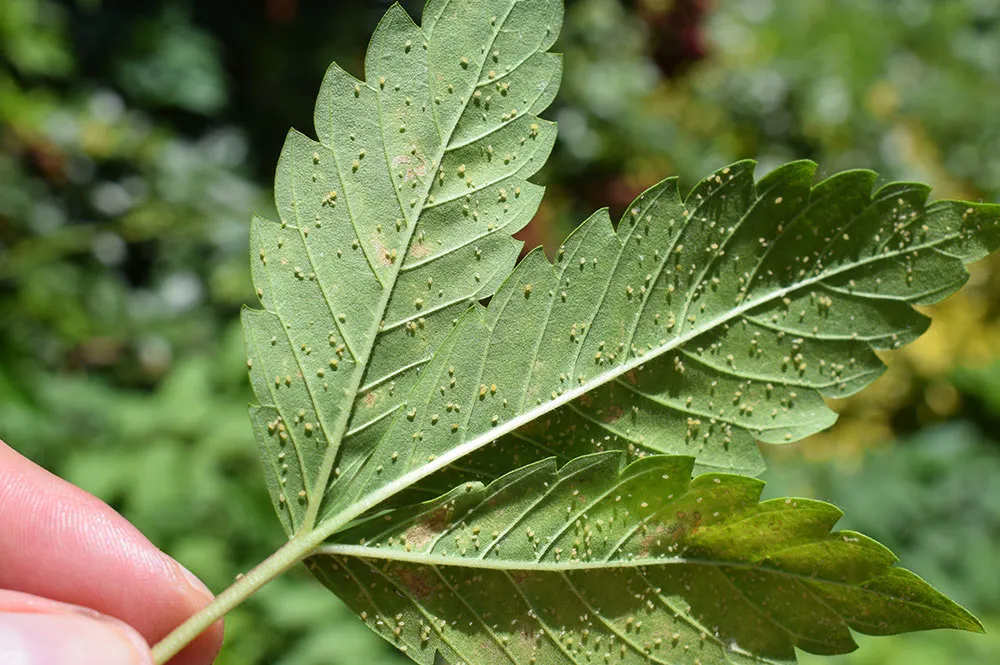
Aphids
Also known as plant lice, they generally attack outdoor plants when it is warm, though when they are plentiful outdoors, they are likely to infest indoor plants as well. They are tiny, pear-shaped insects (1-3 mm long) and can vary in color (black, brown or yellow). Not only do they suck sap from leaves making them wilt and turn yellow, the honeydew they excrete can attract ants, which can bring additional pests with them.
Homemade insecticides and soap sprays as well as neem oil can be used as chemical agents to attack aphids. If you prefer biological warfare, ladybugs are also effective and easily obtainable.
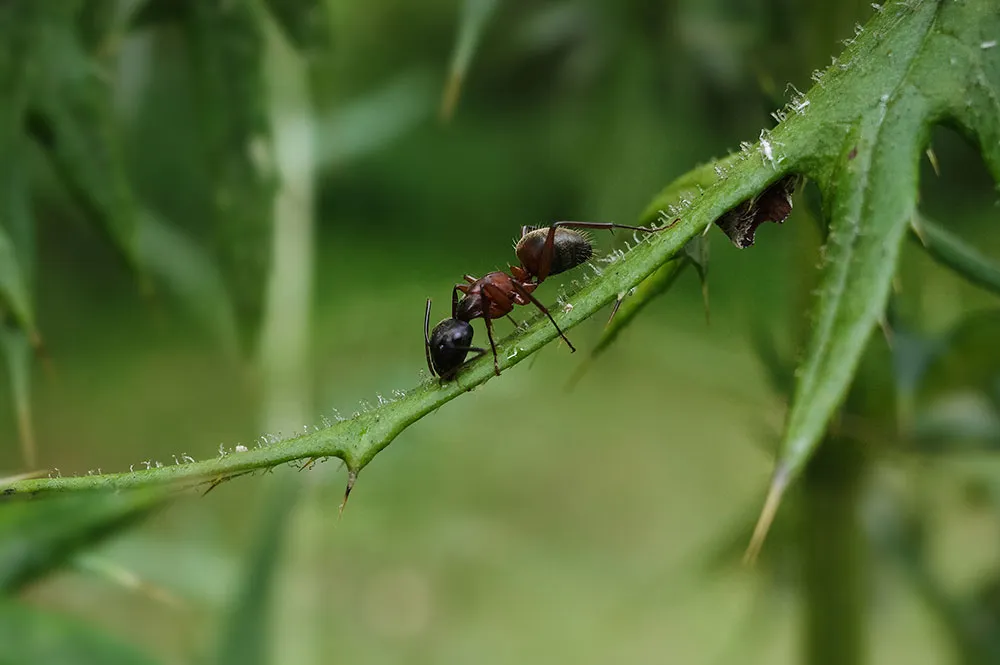
Ants
While ants do not directly attack cannabis plants, if they do appear it usually means you have an aphid or mealy bug infestation as ants graze on these herds. Ant colonies can also damage roots by nesting in the soil. Ants, which generally herd other insects, are attracted to honeydew secreted by aphids, however honeydew also leads to sooty mold, compounding the problem. A natural defense against ants are “moats”, which can be easily set up in any garden. Cinnamon-clove tea, pyrethrum and commercial ant baits are some chemical methods of eliminating ants from your garden.
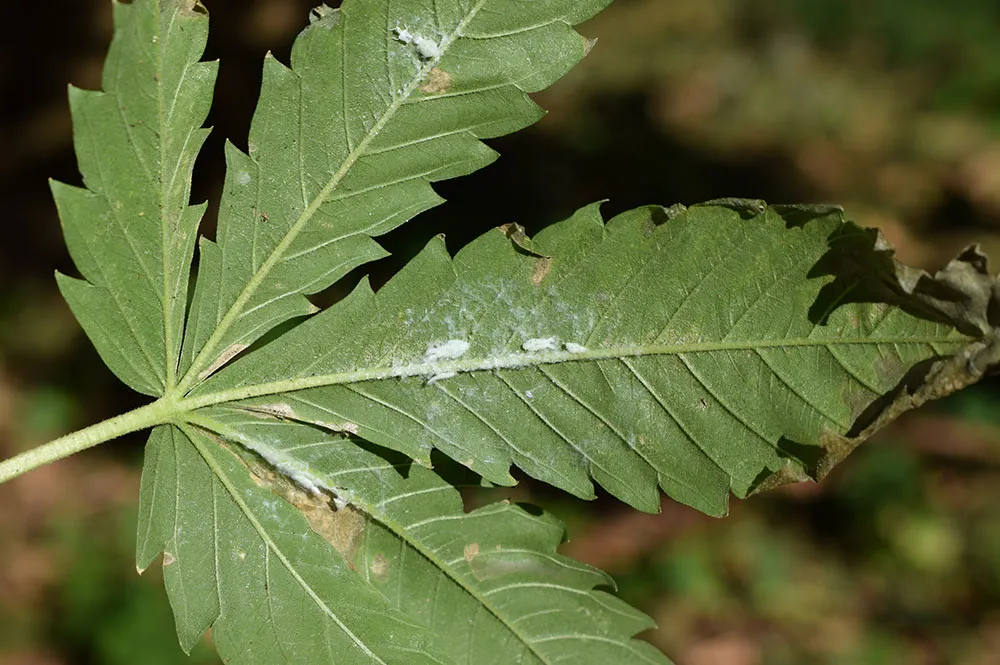
Barnacles/Scale Insects
Much like aphids, barnacle/wax scales suck the energy out of stems and leaves, resulting in weak, sickly plants. Additionally, they can also release a sugar concentrate of the plant’s sap called honeydew, potentially leading to sooty mold. The big difference between scales and aphids is that once they get established, scales tend to stay put, making their physical removal relatively easy. Chemical solutions include neem oil, insecticidal soaps or Spinosad. As with aphids, ladybugs also like to feast on scales, though scales can reproduce much faster than predators can consume them.
Broad Mites/Russet Mites
These pests are nearly impossible to spot with the naked eye, however a broad mite infestation can be easily identified by looking at the leaves, which will have twisted or droopy tops and glossy, blistered leaves turned up at the edges. Buds may turn a brownish color and eventually die. Broad mites can be difficult to eliminate, but regular spraying with neem oil or insecticidal soap can be effective. Infected parts of the plant should be disposed of. Russet mites are similar in that they are tiny to spot on their own, however they are clearly visible once an infestation has occurred as they are in the thousands by that point. The tops of the plant will be tan or yellow in color and will look similar to mold or pollen. Treatment is similar to a broad mite infestation.
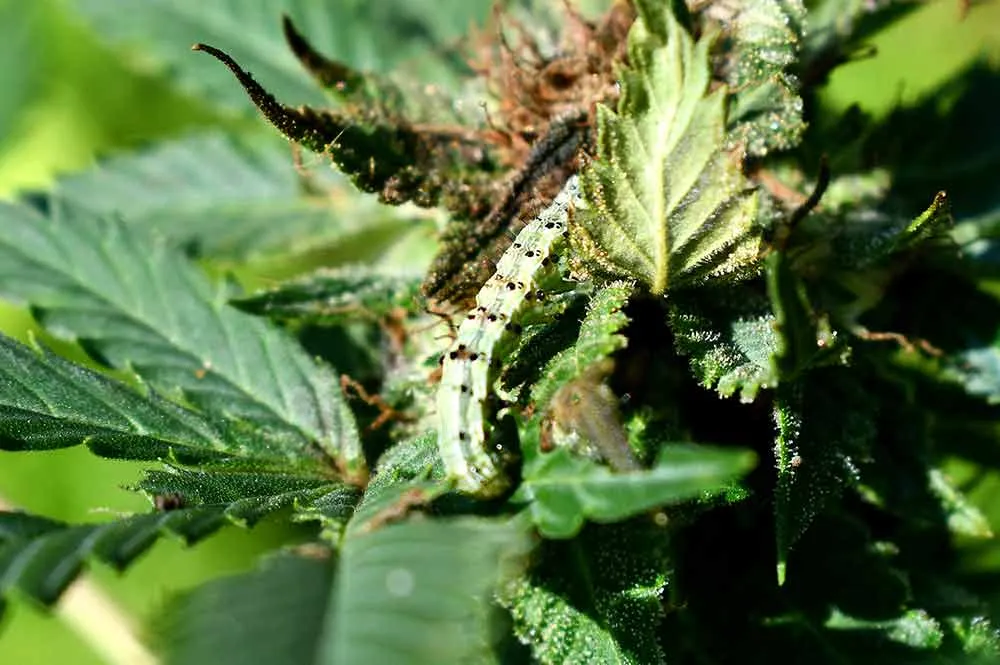
Caterpillars/Inchworms
Caterpillars and inchworms can be identified by either gaping holes or small black spots (droppings) on leaves. If you’re lucky enough, you might even catch the critters in action, making their removal all the more easier and immediate. They reproduce slowly but if left unchecked they can do massive damage thanks to their voracious appetites. Caterpillar sprays are effective in removing them, though they rarely appear indoors.
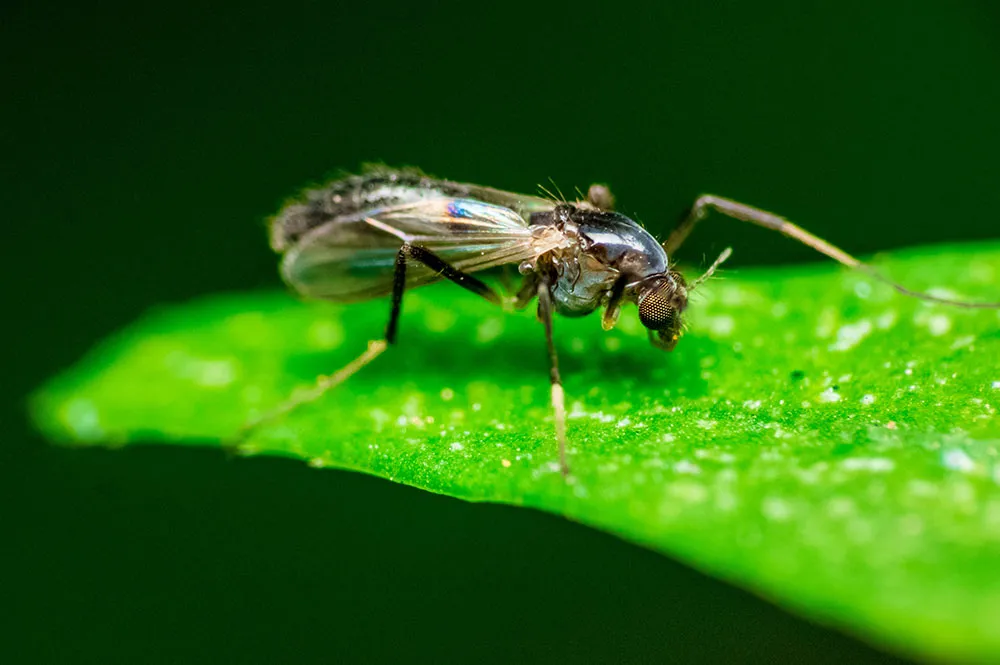
Fungus Gnats
These innocent looking bugs are quite common indoors. They are very small (1/10 - 1/12 inch/3-4 mm) and appear non-threatening, however they live around the top of soil and lower plant canopy. The gnats themselves do not damage plants, however their larvae eat plant roots and organic matter in the soil or grow medium in addition to carrying disease. Fungus gnats thrive in moist, warm conditions, especially on wet topsoil. Adults can be eliminated with yellow sticky cards/traps, whereas larvae need to be eliminated with neem oil or by not watering your plants for a few days.
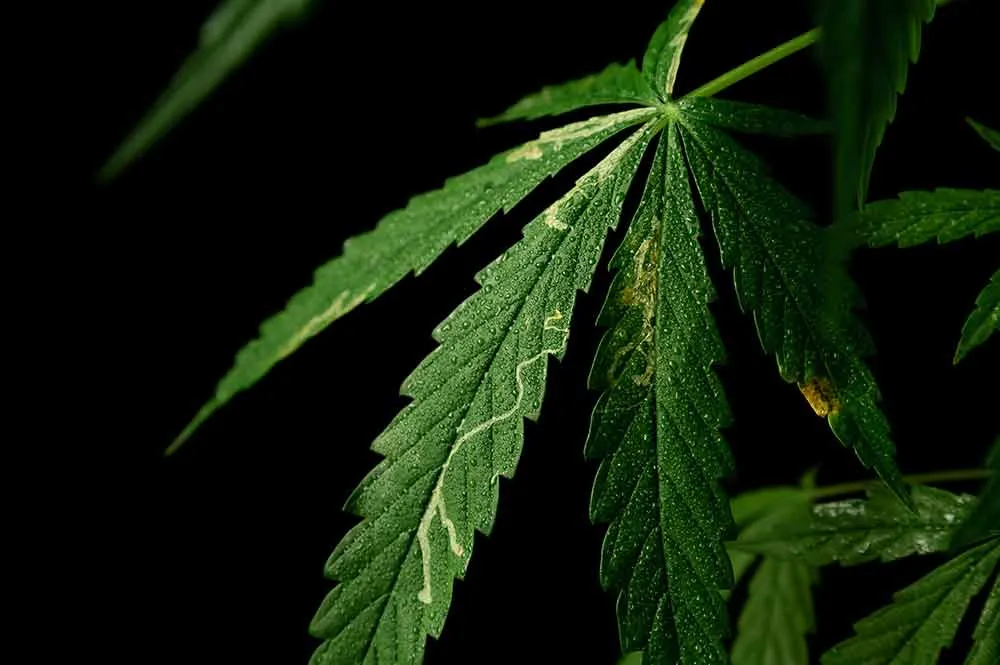
Leaf Miners
Leaf miners are little larvae of various bugs living inside leaves that tunnel through and eat them from the inside. They leave bright, erratic lines on the leaves that are easily spotted. Neem oil and Spinosad are effective chemical agents whereas the Diglyphys isaea parasitic wasp will successfully kill leaf miners if you’re looking for more biological methods.
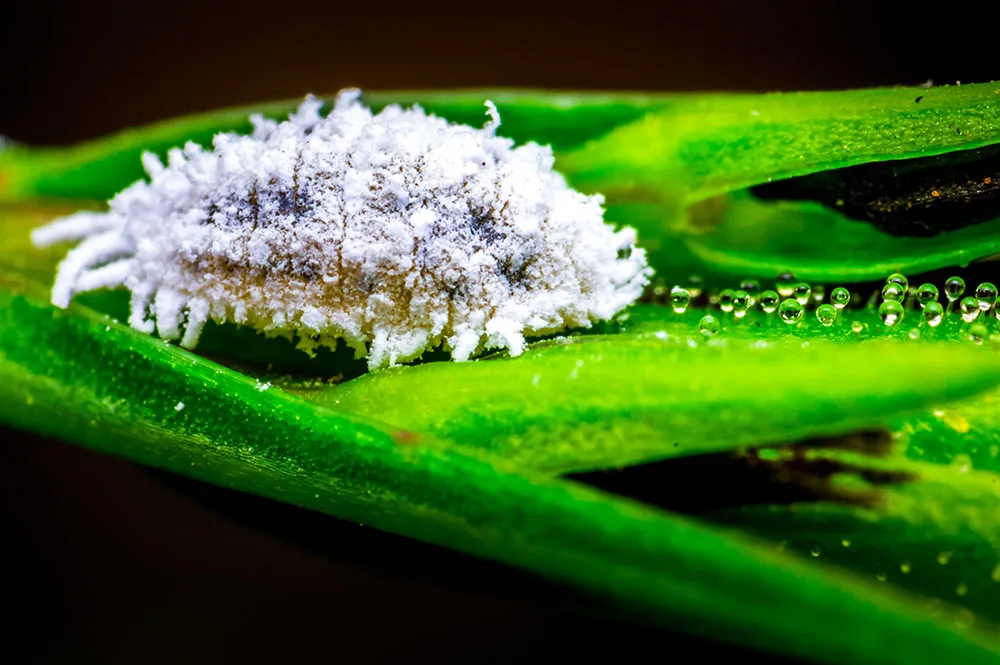
Mealybugs
Another honeydew-generating pest like aphids that also attracts ants and can lead to the formation of sooty mold. Female mealybugs are white and hairy and are covered in a “mealy” wax, whereas males are tiny flies without the waxy cover. Mealy bugs also drain the plant of its juices. They are usually found around crevices and joints between branches. Neem oil, insecticidal soaps and limonene products are effective chemical agents against mealybugs and the Cryptolaemus montouzieri ladybug and the minute pirate bug are reliable biological agents.
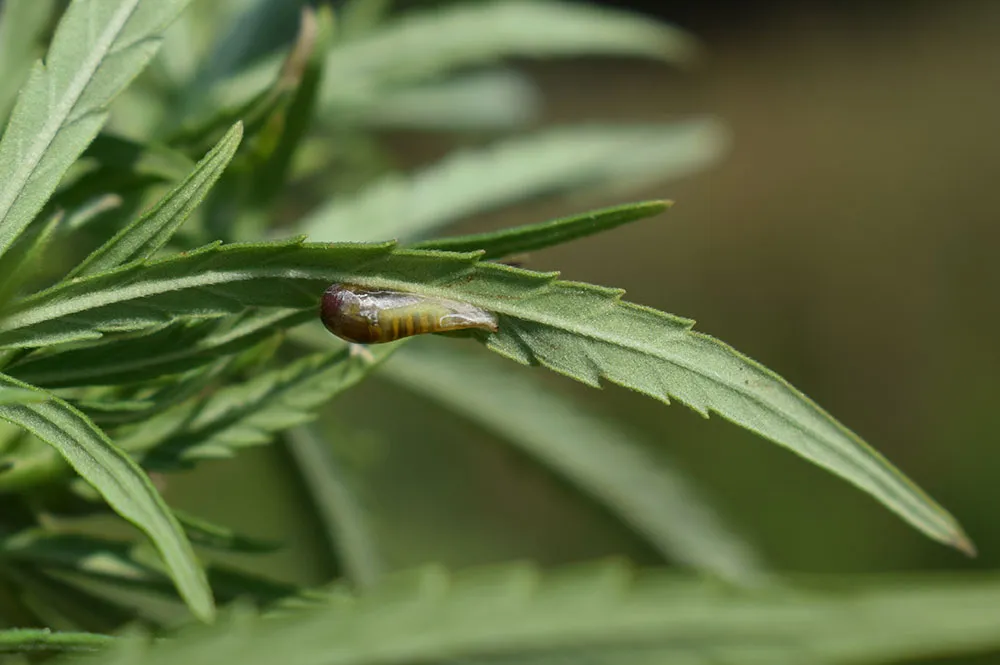
Slugs/Snails
By and large an outdoor pest, slugs and snails attack plant leaves and buds and leave a slimy trail on them. While easy to spot, they can damage several small plants overnight when they are most active, leaving gaping holes in leaves and eating the edges of leaves and flowers. Iron phosphate is the most effective agent against slugs and snails though you can trap them with beer (or other fermented liquid) traps. Physical barriers such as sawdust, eggshells, or copper wire/mesh also work well. Biological solutions include toads, frogs, ducks and snakes, which prey on slugs and snails.
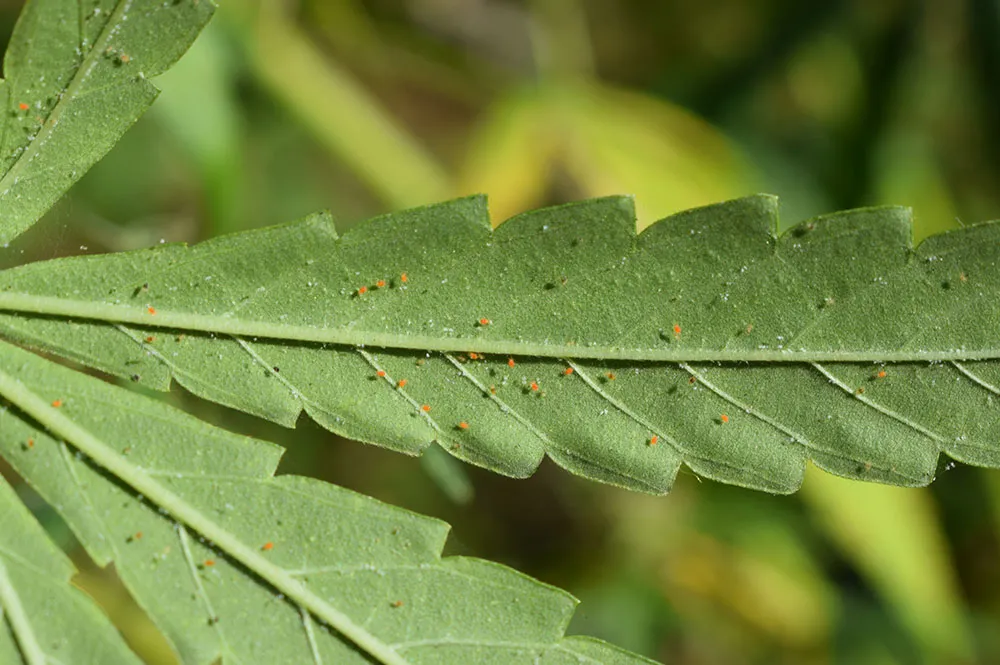
Spider Mites
The biggest and most common enemy of the cannabis grower. These tiny (0.4 mm long) arachnids can only be seen with a magnifying glass. They live on the underside of leaves and on buds and can travel around the plant using their webs, which are visible to the naked eye. They feed on plant sap and can reproduce at explosive rates, which is what makes them so difficult to control. Cinnamon-clove tea, neem oil, and sesame oil are reliable chemical options, predator mites can be deployed as well, though only early on in the infestation so as not to be out-reproduced by the spider mites. Sulfur is a popular chemical agent, though it should not be used near humans or pets as the treatment involves fumigating the entire grow space.
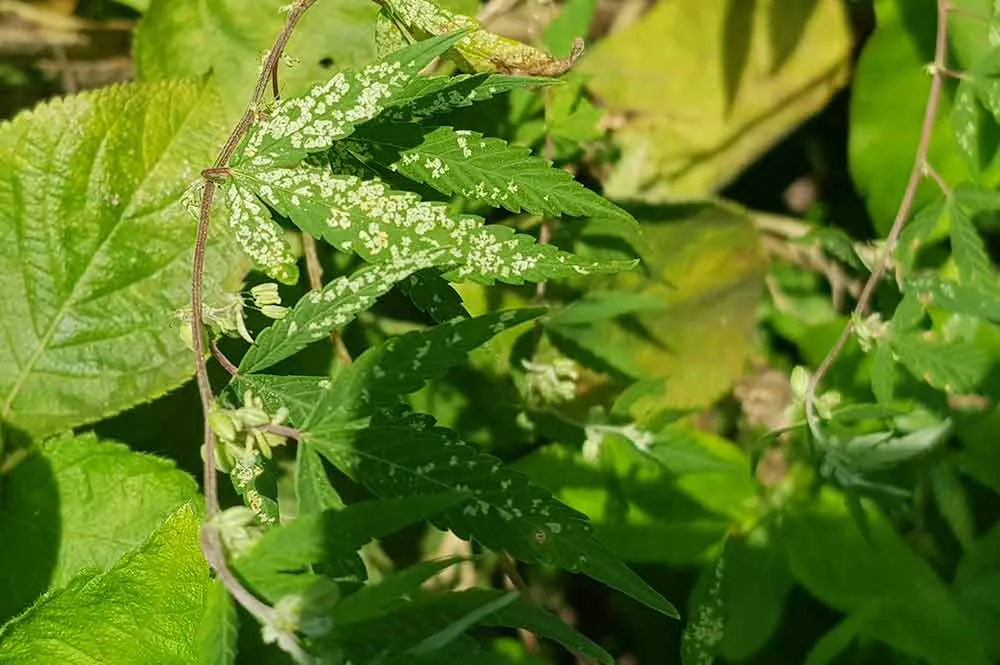
Thrips
Another sap-sucking, pathogen-carrying pest, thrips can be small, fast-moving winged insects or slow-moving, pale worms when young. They leave patchy, white scrapes on leaves, which can die if not dealt with in time. Insecticidal soaps, neem oil, predatory mites as well as beneficial nematodes are effective agents against thrips.
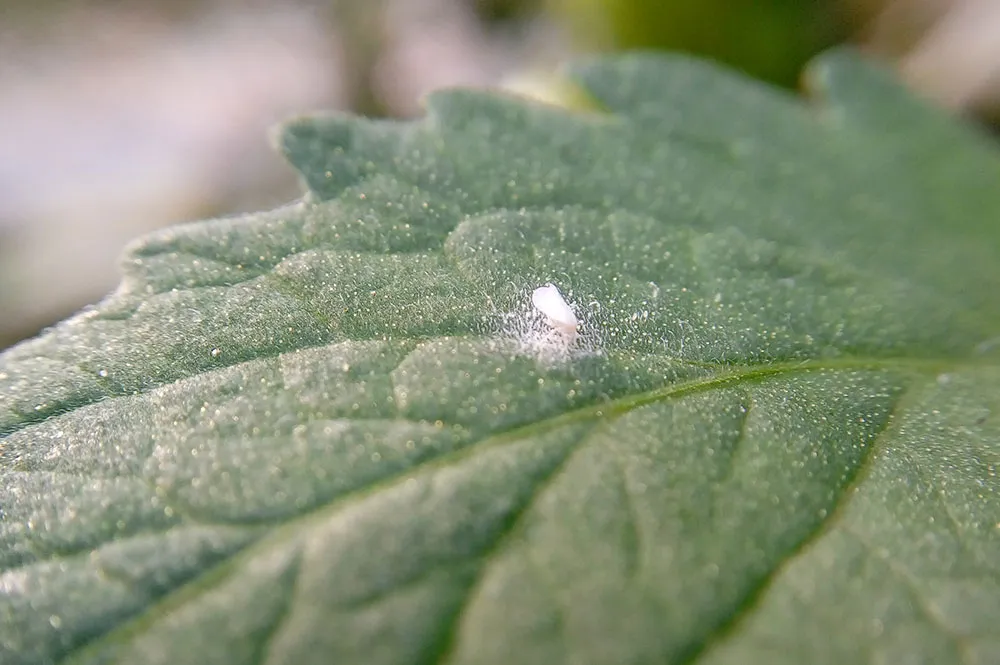
Whiteflies
A common pest both indoors and outdoors, they look like tiny white moths (1 mm long) and are usually found on the undersides of leaves. When disturbed they scatter en masse, fluttering around the plant leaves. Like other cannabis pests, they are sap-feeders and can suck the life out of your plant if not dealt with promptly. Yellow sticky traps, neem oil, insecticidal soaps as well as Spinosad products can be used to eliminate them from your garden.
WHAT ARE THE COMMON CANNABIS DISEASES?
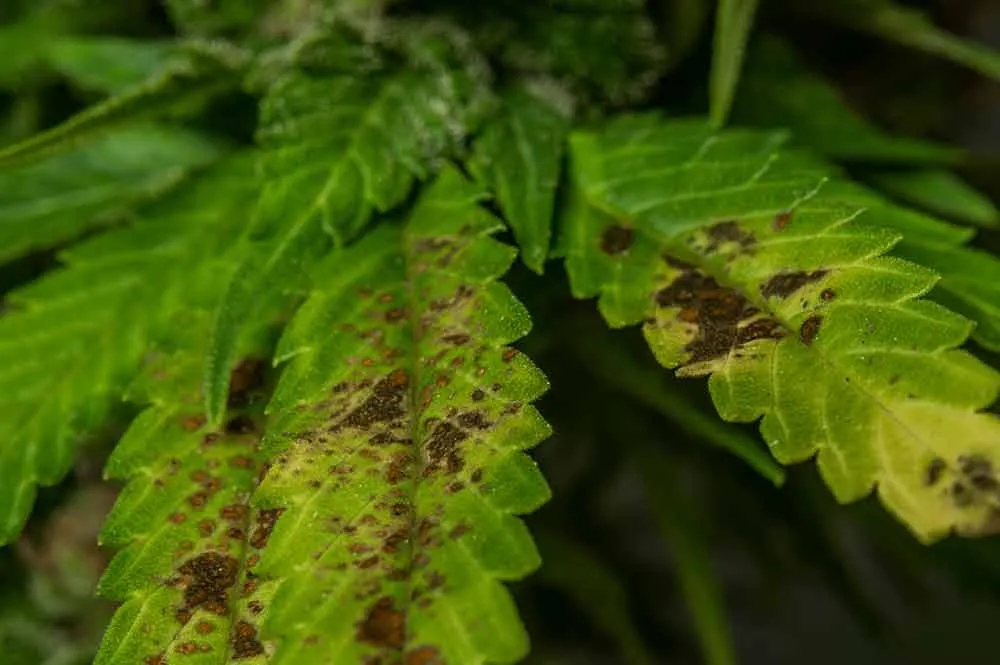
Plant diseases can happen nearly anywhere and at any stage of the plant life cycle if there are environmental imbalances. Diseases can be either fungal or bacterial in origin, though providing a balanced environment to prevent disease is the best solution in both cases. The following are the most common diseases cannabis growers encounter:
Gray mold / botrytis cinerea
Found on most plants everywhere, gray mold/botrytis/bud rot is a fungus that feeds on wet plant tissue at a temperature of 55-70° F (13-21° C) and generally infects damaged parts of the plant (cuts, lesions, etc.) that result from pests or pruning, for example. When humidity is high enough, it forms and attacks the insides of buds, stalks and leaves. It starts out looking like a white powdery mildew before turning a fuzzy, gray/smoky color, damaging plants to the point of no return. Neem oil, sesame oil, compost tea and potassium bicarbonate are effective treatments, though sterilization of gardening tools is of utmost importance for prevention and containment.
White Powdery Mildew
Also affecting a wide variety of plants, powdery mildew is made of a variety of fungal species. It generally attacks young leaves that are a few weeks old, affecting buds, stems, leaves and stalks before spreading to other parts of the garden. Tell-tale signs of powdery mildew are humps on the surfaces of upper leaves and the appearance of a white flour-like dust on leaves. It inhibits photosynthesis, stunting growth and crippling your entire harvest. Neem oil, sesame oil, potassium bicarbonate can be used to inhibit germination of powdery mildew.
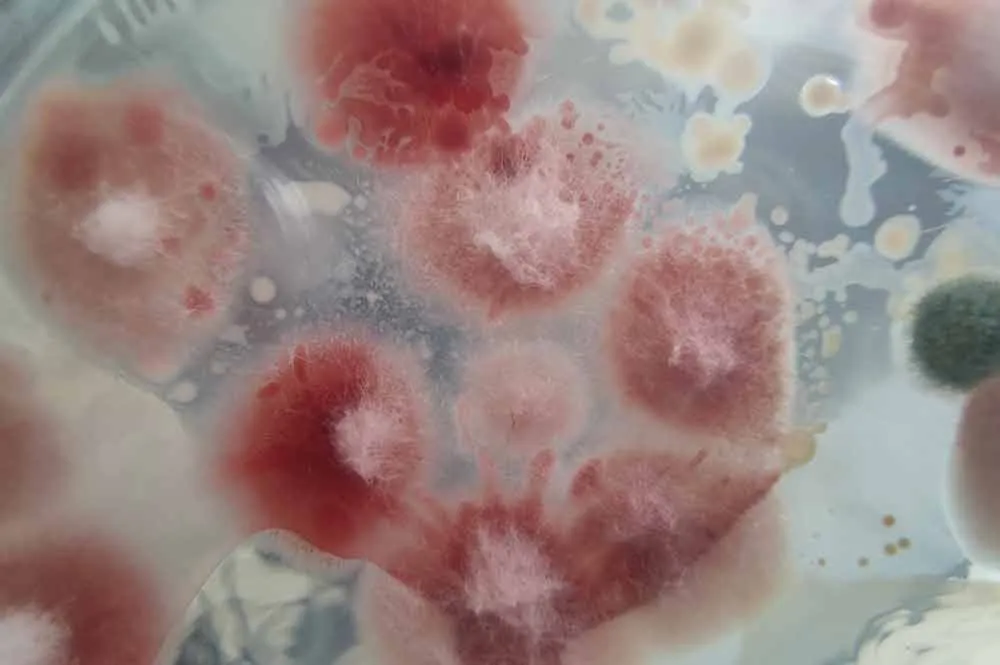
Fusarium
This fungus can produce either fusarium wilt or root rot and either form can do severe damage to a garden. Though not common in cannabis gardens, it is found in the soil and can remain dormant there for several years. Wilt is evident on leaves where it starts out as small dark blotches and then turn yellow-brown. Leaf tips then curl up and remain so on the plant. Fusarium root rot starts beneath the soil where it attacks roots first, working its way up towards the plant stem. Compost and compost tea are a good preventative anti-fungal agent, as is mycorrhizae. Once fusarium takes hold, the only way of getting rid of it is destroying infected plants as well as the soil they are in.
Cannabis mosaic and leafroll
Also known as tobacco mosaic virus (TMV), this pathogen causes twisted leaves and a bright-colored mottling pattern that resembles a mosaic. It stunts growth and reduces yields, though it is harmless to humans. Currently there are no known treatments for TMV in cannabis plants other than removing infected plants from your garden as once a plant catches it, it has it forever.
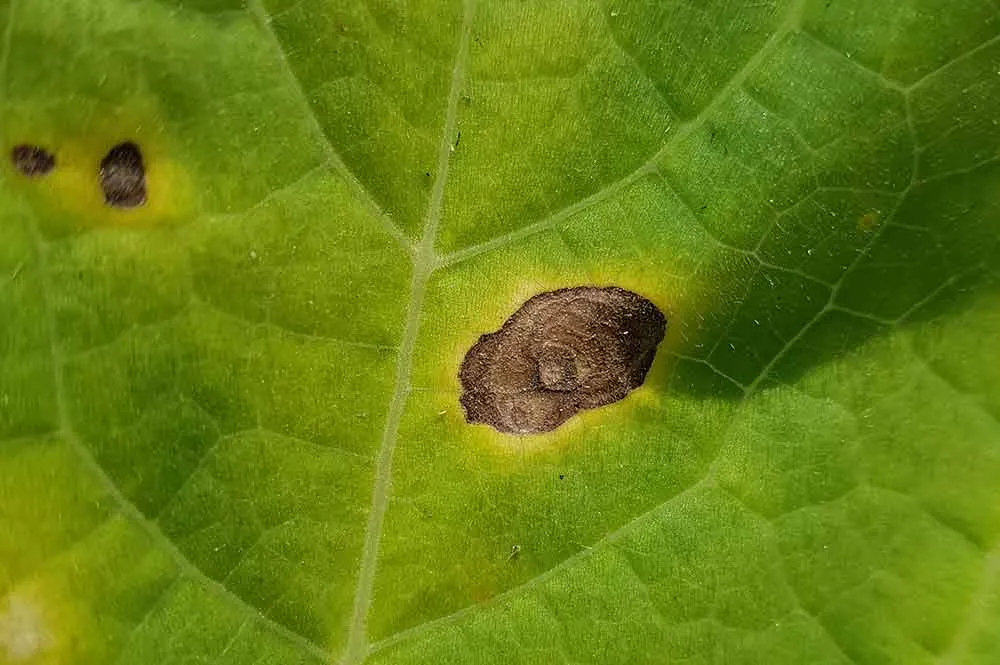
Alternaria
This fungus itself cannot be seen with the naked eye though its symptoms can. Leaf necrosis in the form of brown, black or gray dry spots on leaves is characteristic of an Alternaria infection. Sometimes these necrotic spots dry up and fall apart, leaving holes in the leaves where they were. Defoliation is the most common result and in severe cases the plant could die. Natural or broad spectrum fungicides can be used to prevent an Alternaria infection.
Forget-Me-Not:
As mentioned above, growers can take all the necessary steps in setting up their gardens only to suddenly learn their plants are sick due to a pest infestation or disease. This can happen to anyone anywhere, so the best approach is prevention over intervention.
- Cleanliness – This is of utmost importance at all levels of growing. Remember to not only keep your gardening tools clean and sterilized, but also the grow space itself. Remove any dead plant material, dust, dirt and other objects/materials that might be a vector for viruses, bacteria and insects.
- Pets – We all know you love Fido and Whiskers, however they belong nowhere near your garden as they can very easily transport all sorts of pests and pathogens, destroying your crop and wasting months of garden work. They can also leave various debris in and around your plants. No one likes picking out pet hair from sticky, resinous buds.
- Clothing – Wear clean clothes when working in your garden and always change clothes before and after working with your plants. You will reduce the chances of bringing in an infestation from the outside. Also remember to use separate tools for indoor and outdoor gardens.
- Quarantine – A term everyone should be familiar with in 2020, quarantining plants is crucial if a disease/pest is detected in your garden. Separate the affected plant from the rest of the garden for a couple of weeks while it is being treated. If you are using clones, but them into quarantine for a couple of weeks before adding them to the rest of your garden.
- Planting Mix – Many pathogens and pests can arrive at your garden from store-bought mediums. Always buy from a reputable source or make your own super soil. You can also sterilize soil by baking it in direct sunlight for several hours.
- Pest Highways – Pests can easily enter grow spaces so wherever and whenever possible, use screens or nets to stop insects from entering.
- Humidity – Most forms of mold result from excess humidity in the garden. Use a hygrometer to maintain a safe humidity level (40-60%) to prevent fungal infections and water only as needed.
Pro-Tip No.1: If growing in an indoor garden, install a HEPA filter on the intake system to catch any potential bugs and other vermin. UVC germicidal lamps also effectively kill pathogens and can be used in conjunction with HEPA filters.
Pro-Tip No.2: Some preventative steps can be taken by way of proper genetics (seeds). There are several varieties that are mold resistant, such as Northern Lights, Super Silver Haze and Power Plant. Regardless of your grow experience and knowledge, any garden can fall victim to disease or a pest attack, however in most cases prevention is the best solution. Should that fail, depending on the issue, it’s not necessarily a death sentence for your garden. Ultimately it is up to the grower to respond swiftly and keep the problem from getting worse. Ready to be vigilant and save the day?
-
20+ Years Experience
Over 500K seeds sold worldwide
100K+ Happy Customers -
Germination Guaranteed
Complete satisfaction or we will replace your order -
Dutch and USA Genetics
Master breeders inspiring strains from across the world -
1-5 Day Delivery - Guaranteed
Free Express Shipping to the US, Canada and UK








